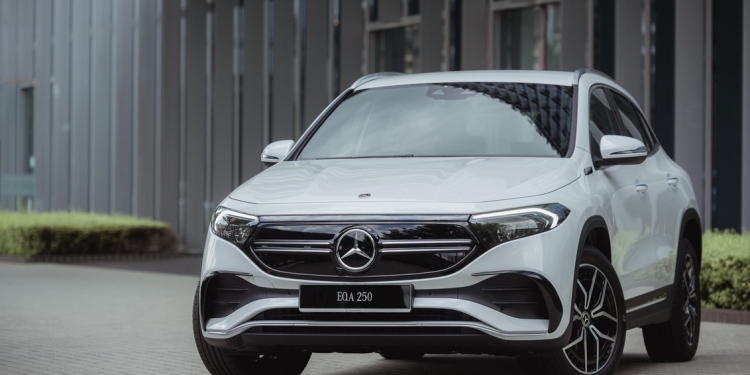Mercedes-Benz Malaysia has just taken the wraps off their all-new electric crossover, the Mercedes-Benz EQA. The car doesn’t sit on a bespoke electric vehicle (EV) platform but instead shares its platform with the petrol-powered Mercedes-Benz GLA. For the Malaysian market, we will only get one variant in the form of the EQA 250 AMG Line
But it comes just a day after the Hyundai-Sime Darby Motors launched the Hyundai Ioniq 5. So, can the EQA offer a better value over the Ioniq 5?
Mercedes-Benz EQA Malaysia pricing and availability

The Mercedes-Benz EQA 250 AMG Line in Malaysia is fully imported from Germany and priced at RM278,201.25, on-the-road without insurance. Being an EV, it is also exempted from import and excise duties, sales tax, and road tax as announced during Budget 2022.
Included in the price is four years, unlimited mileage warranty for the vehicle and eight years or 160,000km mileage warranty on the battery pack.
If you place your orders now, expect to take delivery of the car in the second half of April 2022.
For comparison, the locally assembled Mercedes-Benz GLA 250 AMG Line is priced at RM271,164.84, which is about RM7,000 less. However, when the sales tax exemption ends for petrol-powered vehicles at the end of June, the GLA 250 AMG Line will be priced at RM278,888. Then, the EQA will be RM686.75 cheaper by comparison.
Power output and charging
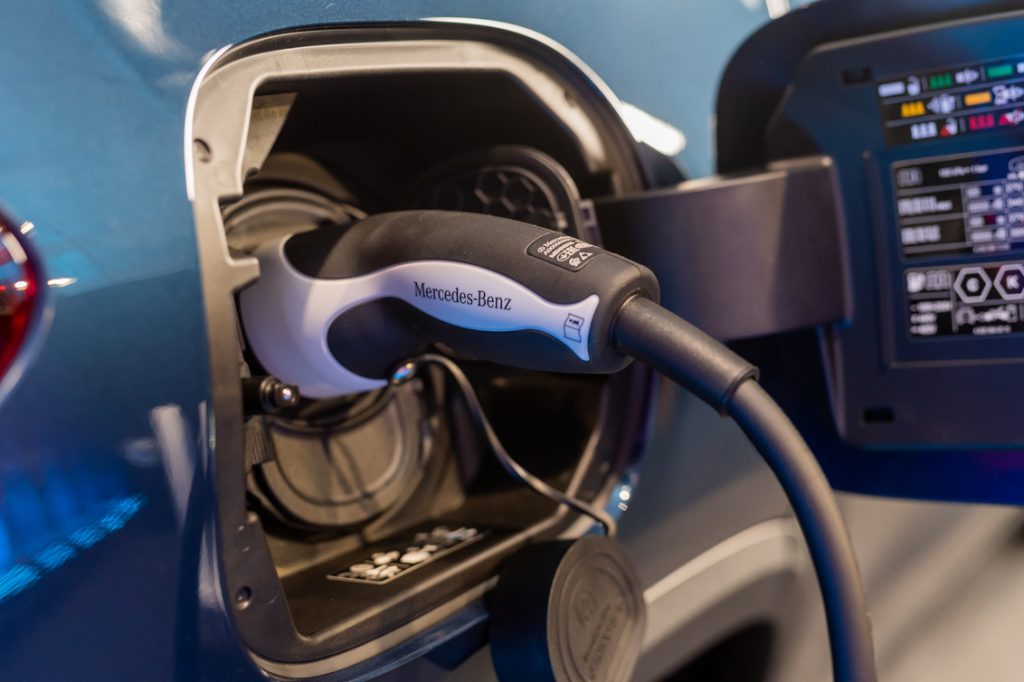
Powering the EV is a 66.5 kWh battery pack that can provide up to 402 to 429km of range based on the WLTP cycle. The sole EQA variant for Malaysia comes with a single electric motor driving the front wheels and produces 190hp and 370Nm of torque. This combination can get the EQA from a standstill to 100km/h in 8.9 seconds with a limited top speed of 160km/h.
As for juicing up the battery, it takes 32 minutes to charge from 10-80% with a 100 kW DC fast charger or slightly over an hour with a 50 kW DC charger.
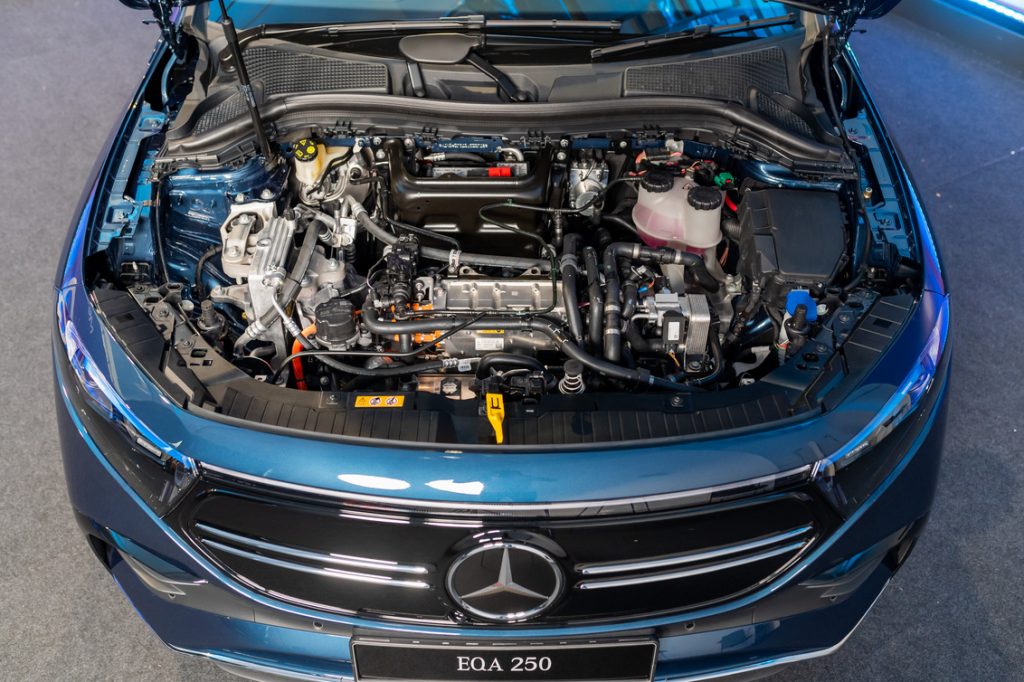
At home, you can install a 22kW wall box charger from Mercedes-Benz, but the car can only charge at 11kW. Expect to wait around 5 hours and 45 minutes for the battery to go from 10 to 100% state of charge.
Using the onboard navigation system or the Mercedes me mobile app, you can easily search for a charging station along your route. Furthermore, Mercedes-Benz is giving the first 1,000 customers 50% off for a one-year subscription with JomCharge, which allows unlimited charging.
There will be 13 new DC fast chargers installed at select Mercedes-Benz dealerships which all Mercedes-Benz customers can use for free until the end of 2023.
Similar exterior as the GLA with slight tweaks

The Mercedes-Benz EQA not only shares the same platform as the GLA but also styling cues, especially from the side. Even the dimensions are nearly identical. So, to differentiate it from its petrol-powered sibling, Mercedes have given it a new face and rear design.
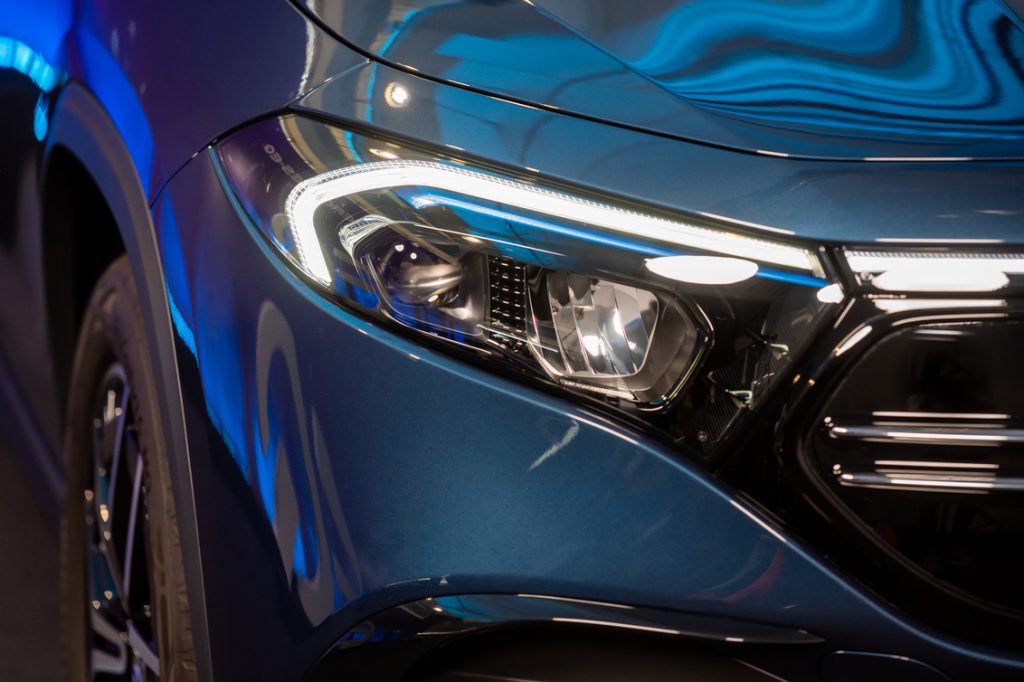
As standard, you get LED High Performance headlights with the signature blue detailing of the EQ brand. A fibre-optic light strip running across the top of the grill gives the impression that the two LED daytime running lights are linked. The grill that houses the Mercedes emblem is closed-off since there is no engine to cool.
Moving to the side, the car rides on 19-inch AMG 5 twin-spoke alloy wheels with more than 200mm of ground clearance.
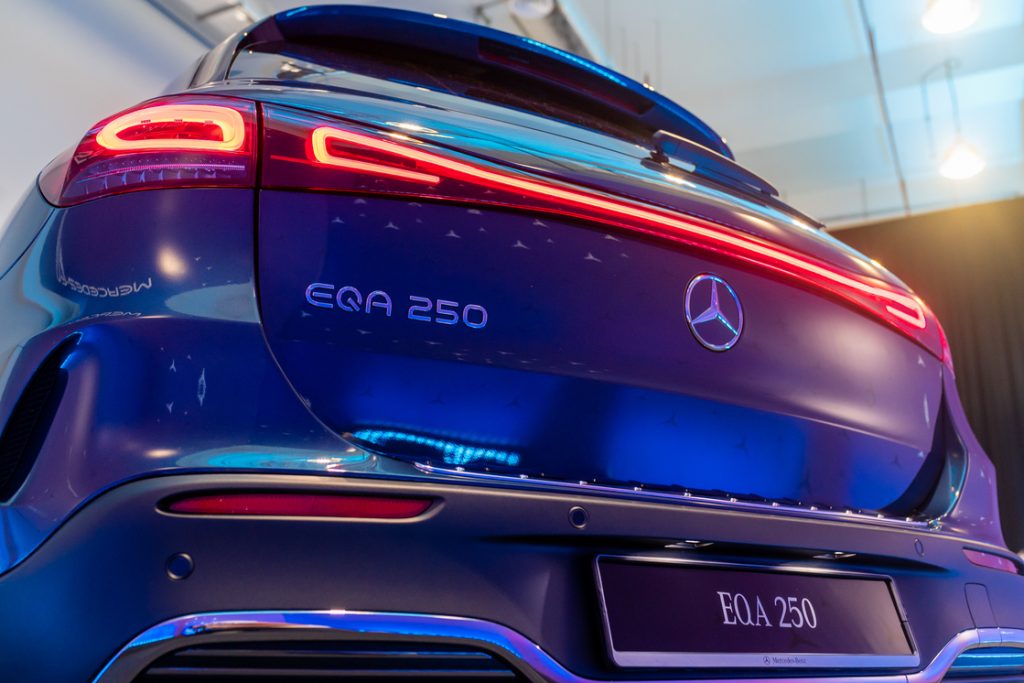
At the rear, the styling of the front facia is repeated here with a light strip running across the tailgate, linking the taillights. The fixed taillight on the Opening of the powered tailgate presents a cargo space of 340 litres. This number is down from the GLA’s 435 litres because of the space occupied by the battery pack. There is the option of extending boot space by folding down the rear seats.
A familar looking interior
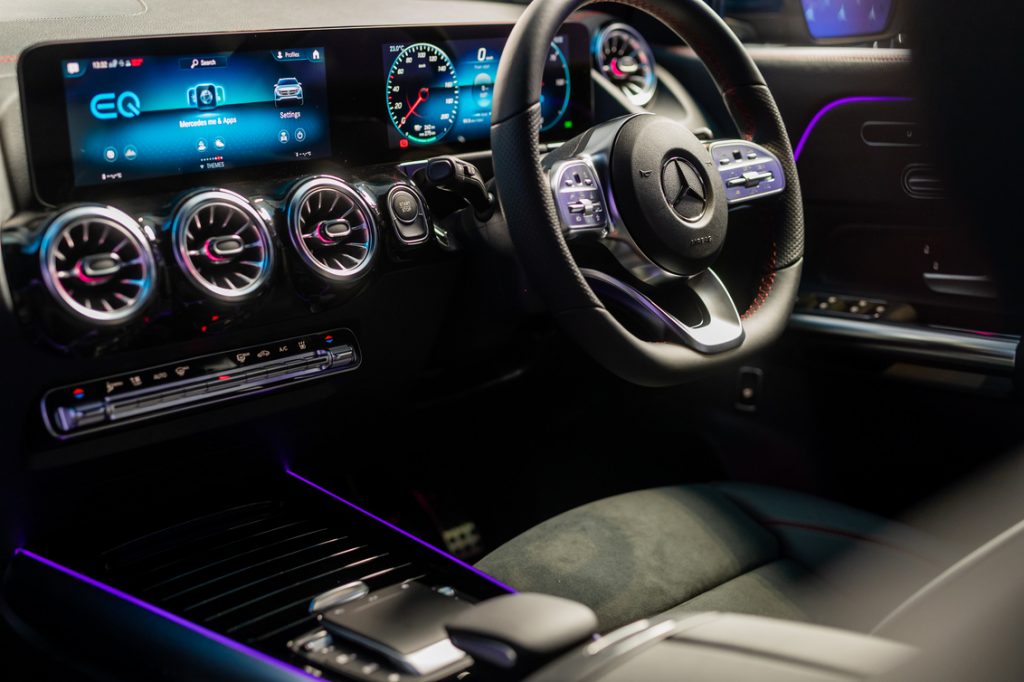
Inside, you will be hard-pressed to tell a difference between the EQA and GLA because there is nothing new that the EQA brings to the table.
It gets twin 10.25-inch displays on the dashboard handling the instrument panel and infotainment duties. The whole system runs on Mercedes-Benz User Experience (MBUX) with support for Apple CarPlay and Android Auto. To charge your phone conveniently, the EQA comes with a wireless charging pad. There’s also a heads-up display and Nappa leather-wrapped steering wheel for the driver.
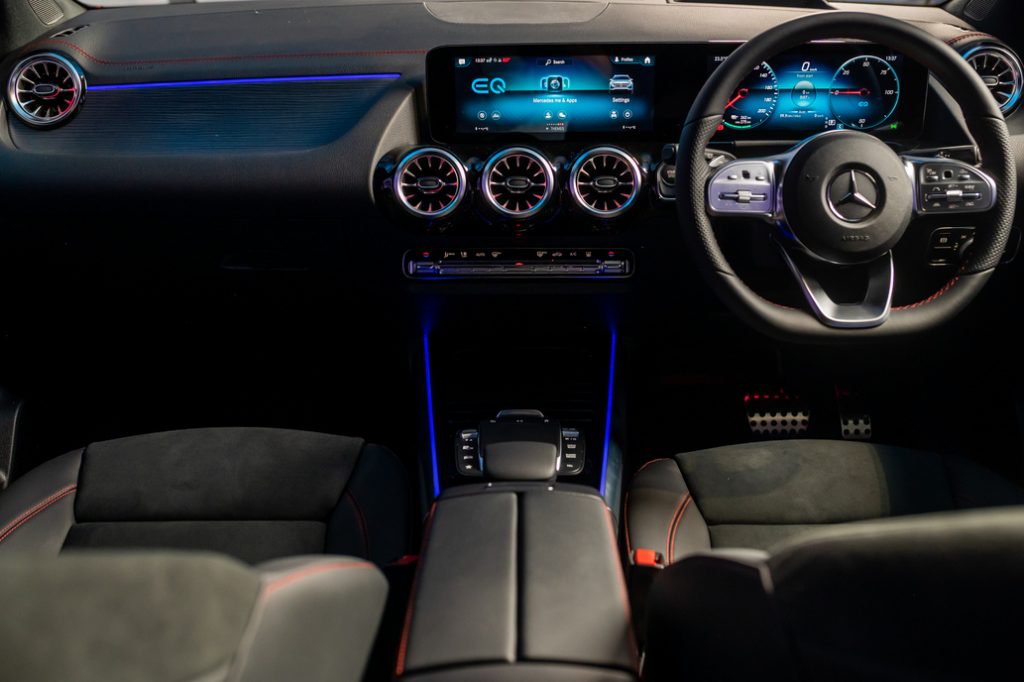
Moving to upholstery, the car is specified with sports seats wrapped in Artico faux leather. Interestingly, the front seats get a heater function but without ventilation, which is odd given our hot climate. Only the front seats are powered with the driver getting 4-way lumbar support.

There is also a back open-pore linden wood trim inlays on the dashboard. To lighten the mood, the car is fitted with a 64-color ambient lighting system that runs along the beltline. The lights also extend into the turbine-style air vents.
Active suite of driver asistance system
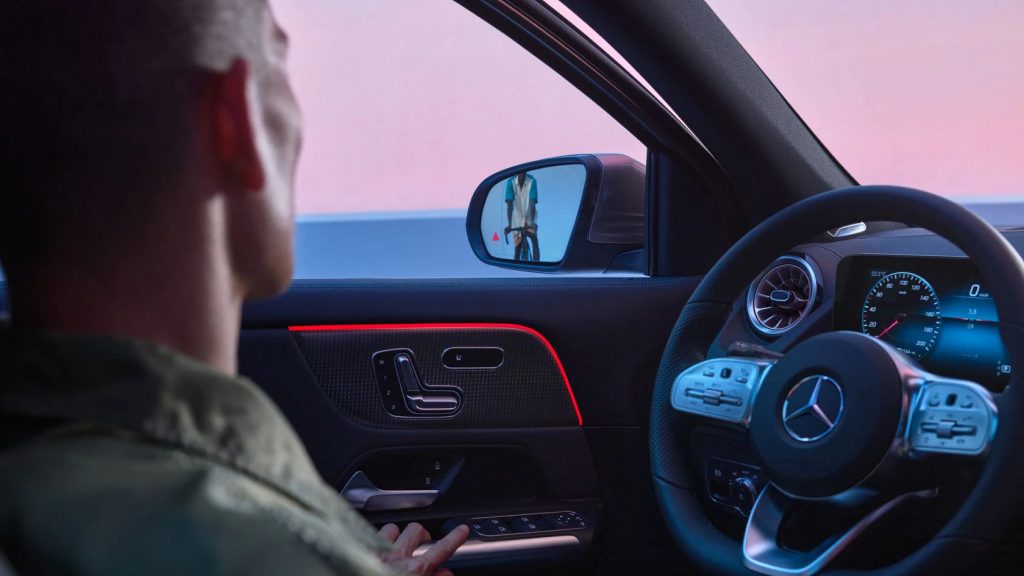
As standard, the EQA 250 AMG Line is equipped with Mercedes-Benz’s suite of active driver aids. So, expect to find autonomous emergency braking (AEB), lane-keeping assist, lane centering assist, adaptive cruise control with stop and go, active speed limit assist, active blind-spot monitoring, active steering assist, parking assist, and exit warning via the ambient light system.
Unfortunately, there is only a standard reversing camera instead of a 360-degree surround-view monitor. Considering the price of the car, this is a bit of a shame.
For pedestrian safety, the car comes with Acoustic Ambient Protection that produces a sound outside the vehicle up to 20km/h. This aims to alert pedestrians of the car’s presence since electric cars move in silence.
How does the EQA stack up against the Ioniq 5?
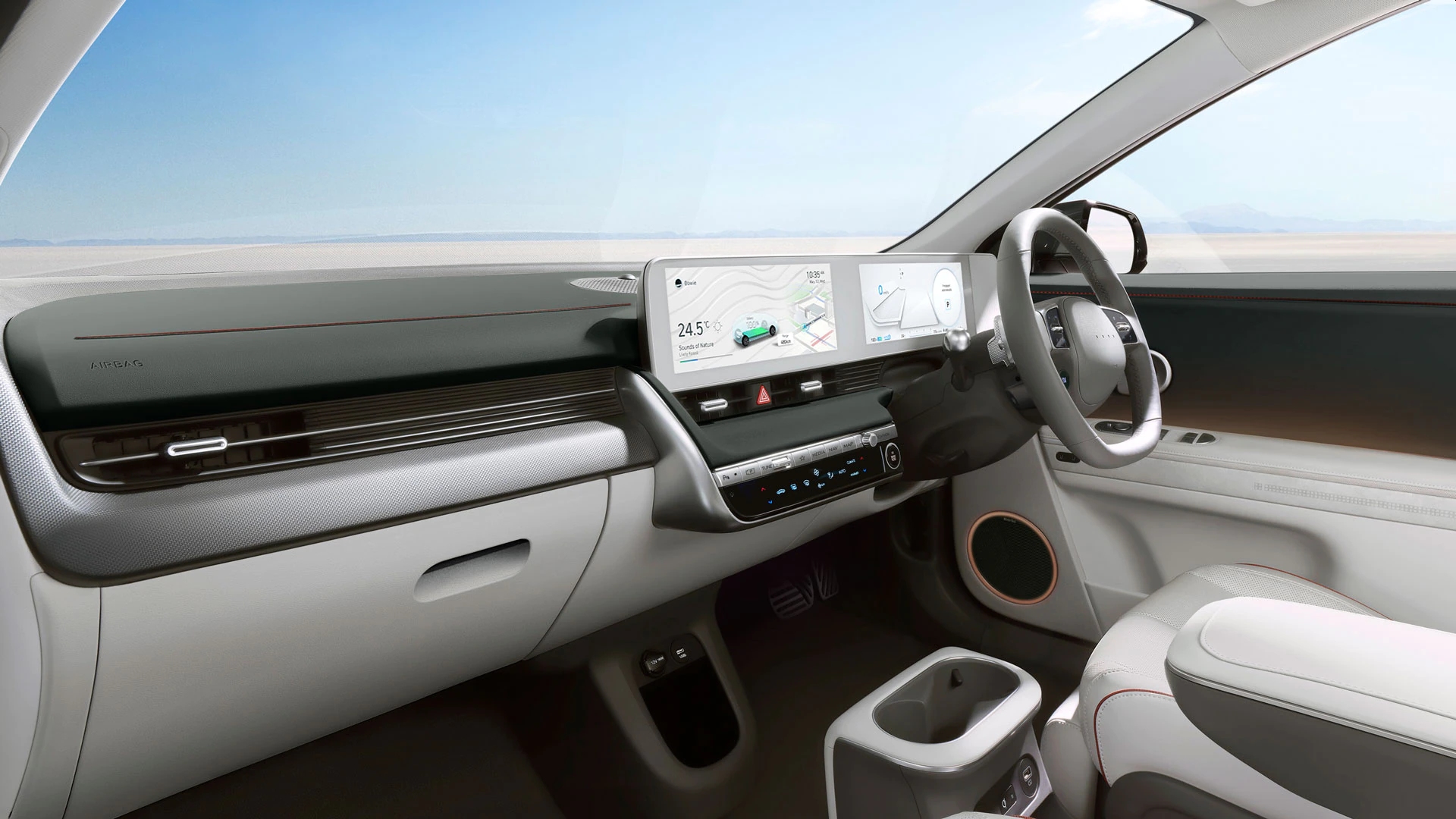
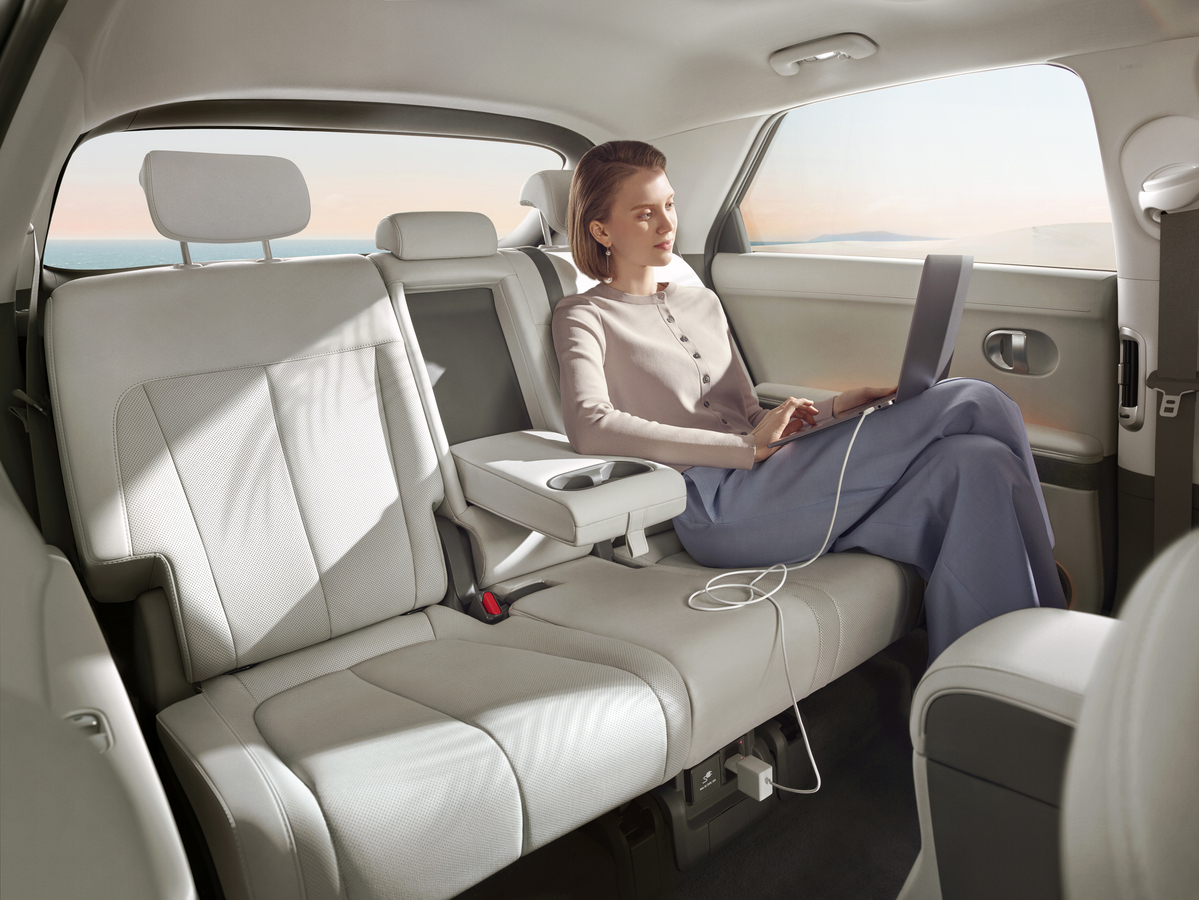

The recently launched Hyundai Ioniq 5 is the brand’s flagship EV. It costs RM259,888 for the range-topping Max variant, which is around RM18,300 less than the EQA 250 AMG Line. Unlike the EQA which is based on the petrol-powered GLA, the Ioniq 5 is built on a dedicated EV platform and it features a retro 8-bit inspired exterior design. Even the 20-inch rims on the Ioniq 5 stands out compared to the 19-inch AMG Line rims on the EQA 250.
Furthermore, the Max variant Ioniq 5 packs a larger battery at 72.6kWh paired with dual electric motors that push a total output of 300hp and 605Nm of torque. This is far more significant than the 190hp and 370Nm of torque produced by the EQA and it can go from 0-100km/h in 5.2 seconds. However, the rated range is similar to that of the EQA at around 430km.
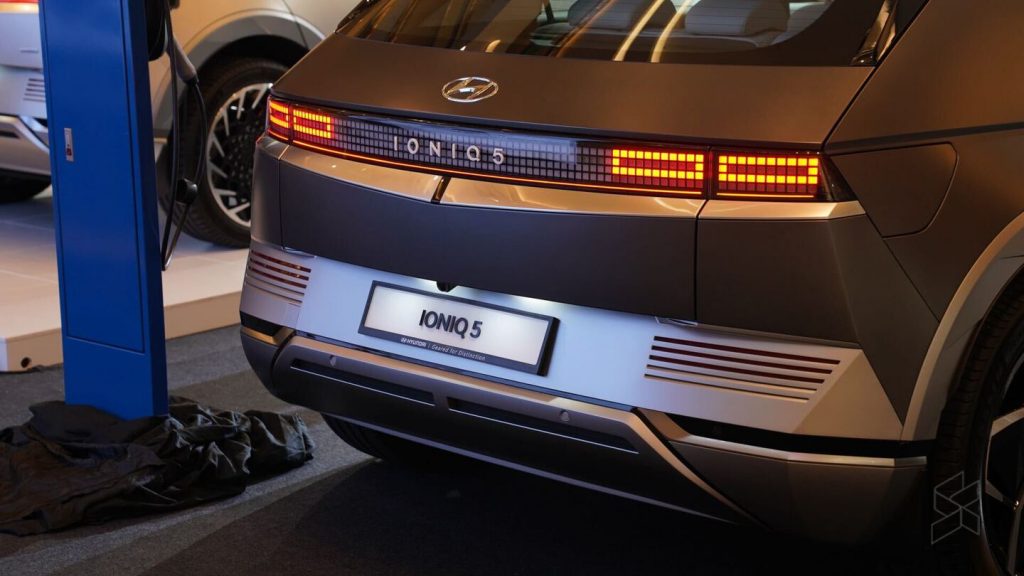
Although the Ioniq 5 has support for a 350kW DC fast charger, which only requires 18 minutes to reach 80% state of charge, there are no charging networks in Malaysia that support it. Therefore, using the 50kW DC fast charger, both the EQA and Ioniq 5 will reach 80% charge in around an hour.
In terms of comfort, the Ioniq 5 adds on ventilation function for all seats and comes with a premium 7 speaker Bose sound system. Moreover, thanks to Hyundai’s bespoke Electric-Global Modular Platform (E-GMP), it offers more interior space. The Ioniq 5 has a wheelbase of 3 metres which is significantly longer than the EQA which has a wheelbase of 2.7 metres.

Even in terms of boot space, the Ioniq 5 boasts 527 litres capacity which is 187 litres more than the EQA. On top of that, the Ioniq 5 even gets a frunk where you can store smaller items such as the charging cable under the hood.
The EQA does have a comparable list of active safety features to the Ioniq 5. However, the Ioniq 5 has the upper hand for having a 360-degree surround-view monitor, unlike the bog-standard reverse camera on the EQA.
Overall, the Hyundai Ioniq 5 offers a different experience and will turn more heads compared to the relatively generic-looking Mercedes-Benz EQA. If the three-pointed star emblem does not mean much to you, the Hyundai Ioniq 5 does everything the EQA can and then some for less money.
If you have RM280,000 to spend on an EV, which would you go for? Let us know in the comments below.

